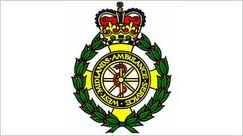Ambulance service to take over non-emergency care.
Plans that will eventually see the full integration of the 999 and 111 services in the West Midlands (except Staffordshire) have taken an important step forward with the 111 service transferring to West Midlands Ambulance Service.
The change, which took place yesterday at noon, is the first step of a process that will lead to significant improvements for patient care through fully integrating NHS urgent and emergency care services.
The new service will see fewer patients being sent ambulances and lead to a reduction in the number of patients asked to attend A&E.

Instead, the new model will support more patients being cared for in the most appropriate place for their needs. This will also include more patients being provided with care over the phone by a team including GPs; advanced nurse practitioners; community mental health teams; pharmacists, dental nurses, paramedics and midwives. More calls will also be diverted to GPs (in and out of hours), urgent treatment centres and rapid response services operated in the community.
Rachael Ellis, Chief Officer for Integrated Urgent & Emergency Care, Sandwell and West Birmingham CCG, said: “In 2016 the West Midlands launched England’s first Integrated Urgent Care Service which saw NHS 111 and urgent care providers working as one team.
“The launch of our new service is another national first as we move to fully integrate 111 and Out of Hours Services with the 999 service run by West Midlands Ambulance Service.
“Once in place, it won’t matter whether patients dial 111 for urgent care or 999 for emergency care, our patients will all receive the same quality of care with their calls answered quickly and they will have access to the right clinicians for their need.
“This integration represents a real opportunity to work as one system to care for our patients.”
WMAS Chief Executive, Anthony Marsh, said: “We have an outstanding track record in running complex clinical call handling operations. This expertise will allow us to bring real improvements to the 111 service for both patients and our staff.
“We will build on the good work that Care UK, the previous provider, had initiated.
“During the winter period we start to make the changes necessary to take the service to the next level. We have already taken on over 200 additional staff to that we can maintain the current service at the highest possible level. In the spring we will begin the work to properly integrate the two services.”
Jeremy Brown, WMAS Integrated Emergency and Urgent Care Director, added: “I want to pay tribute to the staff that have joined us from the existing 111 service. They have absolutely embraced our vision of making the service as easy as possible for patients and together with our existing staff are committed to taking the 111 service to the next level.
“This is a tremendous opportunity for those working in both 999 and 111 with the chance to expand their knowledge and embrace the change which will open up new opportunities to enhance their careers. I am certain that this will bring stability to the workforce and help us to develop and enhance the service for patients.”
UNISON union Regional Organiser, Chanel Camilleri-Willis, said: “We are delighted that the 111 service has returned to the NHS family. This is excellent news for both staff and patients.
“West Midlands Ambulance Service already demonstrates outstanding patient care on a daily basis and I have no doubt that they will bring that same high level of performance and patient care with the 111 service. As well as stability of employment this will provide staff with tremendous opportunities to develop and progress their careers.”
Mr Brown added: “Our main focus is to make accessing NHS services easier for patients. We recognise that sometimes patients have been unsure which service to ring – 111 or 999. Once we integrate the services it won’t matter; we will be able to deal with your concern or query whichever number you call.
“The change will also make it easier for our ambulance crews to find alternatives to taking a patient to A&E as they will have the full range of services available to them.”


